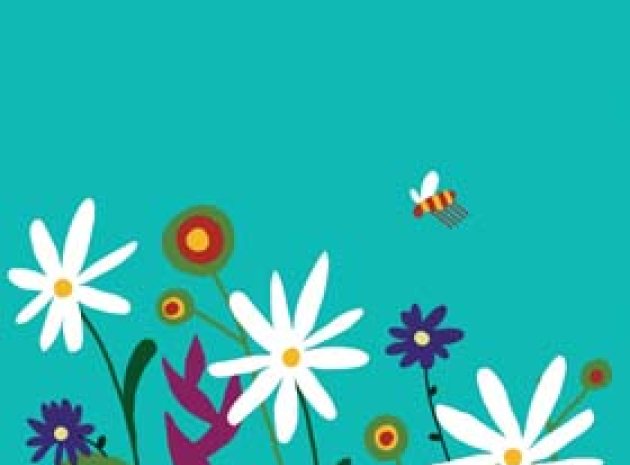Teaching and learning in the outdoors is fairly well explored and documented throughout the primary and early years curriculum. At that age children are generally keen to go outside whatever the weather. They don’t have such restricting uniforms and there are fewer issues in terms of understanding the life changing impact of rain on freshly styled hair.
Teaching at secondary level is challenging already with KPIs and intervention strategies, monitoring students’ progress and changes to GCSE frameworks. Going outdoors to learn can feel like an unnecessary addition to a challenging day. However, there are many benefits to learning outside that will subsequently help with indoor teaching and learning.
Whether you are teaching inside or outside, good quality teaching requires a clear understanding of data, knowledge of how to check individuals’ progress and clear strategies to move students forward from all starting points.
And really good quality teaching requires all of the above plus an innovative approach to presenting ideas, quality differentiation that engages every learner and inspiring and stimulating resources.
This is actually often easier to achieve out of doors and it is just as possible to use outdoor learning to move grade B students to A or A* as it is to get those marginal achievers over the C/D boundary or engage the under-performing year 7s.
The main difference between teaching and learning outdoors at EYFS/KS1/2 and teaching and learning outdoors at KS3/4 is the need for clearly defined curriculum links that support attainment outcomes.
Maths
Those who looked closely at the GCSE maths papers in Summer 2014 will already have noticed the move towards questions that focus on problem solving processes rather than the more formulaic questions. For students not used to applying maths to real world situations this can prove a challenge.
Many children still retain their ability to learn more effectively by ‘doing’ even when they are in KS4, this often applies especially to boys – and using trees, buildings and landscapes for trigonometry and estimation work immediately provides a no cost/no resource reason to get outside.
Small scale construction projects (e.g. building a managed food growing space) provide the opportunity for project management. Budgeting, calculating measurements, surface areas and volumes, geometry, estimating amounts of material required, calculating time required and cost effectiveness are all ways in which real contexts assist children with planned problem solving activities.
Design and technology
Resistant materials classes will be very keen to assist maths with their objective of creating a school grounds installation and can be involved in producing the designed elements of the finished area.
Then, once the maths and resistant materials classes have project managed and created a food growing space into existence of course there is the opportunity to meet some of the requirements of the food curriculum in understanding where our food comes from. Not to mention how to prepare and serve it.
One of the aspects of sustainable food growing is pollination. Using technology in your school grounds to audit pollinator numbers and species is a great way of introducing students to the vital role that they play in our food security.
Often called a ‘Bioblitz’, guidance on undertaking these intensive audits can be found here: www.opalexplorenature.org/BioBlitzes.
Science
Physical properties and behaviour of matter are much more fun when demonstrated on a large scale. If you have access to space with an aerial view then you can use a video camera to record students on the ground demonstrating physically the different states of solid/liquid/gas through their movements. This makes entertaining playback but also encourages students to plan and talk about the impact of how closely or otherwise particles hold together and what different types of subsequent movement might look like. The lesson can then continue into the practicalities of changes of physical state.
Scientific investigation either of the natural world or of pre-hidden examples of man made objects is also easy and engaging in the school grounds. By using a range of scientific equipment students can apply their knowledge of different properties of materials to identify buried or discovered objects.
Local geological investigation is also enhanced through practical application and it doesn’t always have to involve a residential trip to a field studies centre, indeed local geological work can often be an extremely good introduction to field study trips. Building an understanding of soil and soil structures and remediation are all excellent opportunities to explore your local landscape.
History
In Scotland a programme called ‘Outdoor Journeys’ take students on a tour of their local area and asks them to apply their local knowledge and understanding to broader historical themes to help them understand of how local culture and community evolved. On their journey students pose and answer questions about the human and the economical journey and story of the landscape they are passing through.
One way to begin to use your locality as a catalyst for historical enquiry based learning is by taking students outside to an appropriate point and asking them to guess the ages of the different buildings that they can see and order them in oldest to newest. They can then check out and correct their assumptions on-line and create a timeline of development.
English
Using the outdoors and the natural environment in particular is a great way to provide inspiration for creative writing projects as well as giving new ways of exploring elements of literature.
For example, physic gardens, either planted in your school grounds or seen on a visit, can be a great way to learn about the importance of plants in the writing of some of our great authors. Shakespeare made great use of plant derived poison in many of his tragedies.
The use of labyrinths for the contemplative exploration of ideas and reflection can inspire a deeper level of thinking on a subject. A simple observation on the nature of different outdoor environments, be they manufactured, natural, urban or rural, is an excellent opportunity to refine and hone compare and contrast exercises with the use of descriptive words and phrases.
Being outdoors provides a far wider range of multi-sensory experiences than can be reproduced in the classroom, this gives much fuel for poetry and descriptive prose and creates a deeper and more meaningful context to creative works.
Journeys in and around the school grounds can give the context for a story line or narrative; try setting students a challenge to imagine what the space might have been like 100 years ago and then to create a screenplay for a short film about what might have happened then.
Expressive arts
The rise and rise of flash-mobs as a form of artistic expression shows us the impact of scale and environment on this kind of activity. Most performances can be reformatted to a dynamic outdoor installation, which gives students the chance for public performance, not to mention the experience of managing unpredictable environments.
Static art installations are a very powerful way of students having impact on, and ownership of, their local community. Early conversations with Local Authorities, Borough Councils and large community organisations such as football clubs, leisure centres and supermarkets can identify opportunities for long term or permanent installations that can be designed and created by the students as part of a GCSE project.
Case Study Bella Houston Academy
The project was carried out during the school timetable as an integral part of the geography curriculum with connections being made to other subjects such as expressive arts and science. The project was also linked to the John Muir Trust awards.
Pupils spent time during each geography period up to the summer holidays (over a sustained ten-week period) experiencing a green part of the grounds away from the main school building. Additionally, pupils were asked to study a natural area near where they lived during the spring/summer seasons and discuss the changes that were taking place.
Pupils looked at improving the habitats for nature in the school grounds. This included planting hedges and wildflowers (such as lavender, sweet rocket, aster and sunflowers), to attract bees, butterflies and birds. Pupils carried out a litter pick, recorded the different types of ‘unnatural’ things they found and also studied the effects of litter and waste recycling. They considered the importance of ‘taking only photographs, leaving only footprints’ – our impact on nature.
Pupils shared their work through poetry, drawings, leaf sketches, models and slide shows. Some selected pupils also ran a workshop session on the John Muir Award for a School Open Day showcasing Global Citizenship Education. The aim was to show how outdoor learning and direct experiences of nature can help ‘bring to life’ sustainability issues such as biodiversity, pollution, waste management, and health and wellbeing.
Hints and Tips for Learning Outside:
1. Make sure you are prepared and have all of your resources with you as it will take time to go back into the classrooms for any missing items.
2. Use the skills of local businesses to help enhance your outdoor learning; involve builders, food growers, designers, architects, landscape architects and leisure providers.
3. Pre-warn students if at all possible if you are planning to go outside, especially if the weather is poor. This will enable them to come dressed in less fashionable and more effective outdoor clothing!
4. Ensure that your long term planning includes regular use of the outdoors; it only works in a sustained way when planned into your curriculum delivery.
5. Don’t just rely on pre-prepared curriculum resources. Use the outside as an extension of your learning environment and think about the possibilities right across the curriculum.
6. Engage your school’s senior leadership team – buy in from the highest level will ensure that this work is sustained and the best outcomes for all students realised right across the school. When presenting your experiences, be clear about what educational gain you are seeking to make and be clear in the evidence that you have made that gain. Stay across the data.
7. When in doubt – think bigger.
8. Don’t be put off by the weather, however unwelcoming it seem… it will be worth it once you get outside.
About the Author
Juno Hollyhock has been executive director at Learning Through Landscapes (LTL) since 2012. Become a member of LTL’s membership to gain access to the latest news in the outdoor learning sector, hundreds of downloadable guidance notes, lesson ideas and inspirational images PLUS access to LTL’s expert advice through email. All of this support to help you make a difference to your outside space for just £12 per year (plus VAT). Visit ltl.org.uk/membership/member.php.










